Dear Sangha, Dear Friends:
What an honor to be facilitating our Sangha on the very last day of 2019! Thank you for allowing me to hold space for all of us. I believe it is important to enter the New Year with intention, while honoring all that has brought us to the end of another year of life on Earth. This is why, every December, I create two separate family glass jars: one to remember our blessings and what we are grateful for, and one to intentionally invite in new experiences and/or attitudes for the New Year. I generally keep my glass jars in a visible place and, occasionally, I open them and read the tiny folded notes inside. They remind me to be present, intentional and conscious because, as my Mom often says: Where Attention Goes, Energy Flows. So true, don’t you think?
One of my favorite books by Thay is entitled, “Silence: The Power of Quiet in a World Full of Noise.” The content of this book is intimately connected to attention, energy and focus because it is challenging to achieve any of these in the world we live in. This may explain why many of us go on a yearly retreat, like to walk in nature or work in our gardens. Noise is distracting and robs us of our life energy. When we are distracted, our attention goes elsewhere, which means that our energy also goes elsewhere. Hence, the importance of stillness, quiet, solitude and introspection. What better time of the year, to carve out a moment of silence than at the end of 12 months of living? What better time to come home to ourselves and be intentional about where to focus our energy in the coming year? Here is a relevant excerpt from Thay’s Silence book in chapter 6 “Paying Attention.”
The more often we’re able to practice coming home to ourselves, and the more time we spend in mindfulness, the more we are going to become aware of our own suffering. Even though mindful breathing and quiet do put us in touch with joy, they are also likely to bring us in contact with pain (especially at first) as we become more conscious of the suffering we have been hiding from.
We have a natural tendency to run away from suffering. But without suffering, we can’t fully develop as human beings. When we approach suffering in that way, we actually end up suffering much less, and the suffering can transform itself more easily. If instead we continue to try to run away from suffering, to push it into the furthermost corners of our minds, we only perpetuate it.
If we never suffer, there is no basis or impetus for developing understanding and compassion. Suffering is very important. We have to learn to recognize and even embrace suffering, as our awareness of it helps us grow. Quite often we avoid silence, thinking that we will thereby avoid suffering; but in truth, taking quite time to come home to ourselves with awareness is the only thing that will help heal our suffering.
Island of self…
When we walk into our own home, we can relax, let our hair down, and just be ourselves. We feel warm, comfortable, safe, and content. Home is a place where loneliness can disappear. But where is home, really?
Our true home is what the Buddha called the island of self, the peaceful place inside of us. Oftentimes we don’t notice it’s there; we don’t even really know where we are, because our outer or inner environment is filled with noise. We need some quietness to find that island of self.
Every time you feel unwell, agitated, sad, afraid, or worried—these are the times to use mindful breathing to go back home to your island of mindfulness, going back to your island at the times when you aren’t experiencing difficulty, then when you do have a problem it will be much easier and more enjoyable to find that safe place and go home again. You are fortunate enough to know the practice of mindfulness; please make good use of the practice to strengthen the connection to your true home. Do not wait until you are hit by a giant wave to try to go back to your island. Practice going back as often as you can by living the ordinary moments of your life mindfully. Then when, inevitably, difficult moments in life do arrive, going home will be natural and easy to do.
Walking, breathing, sitting, eating, and drinking tea in mindfulness—all these are concrete practices of taking refuge that you can enjoy many times, every day. You have the seed of mindfulness in you; that seed is always there. Your in-breath and out-breath are always available. You have the island within yourself. Taking refuge on that island through mindfulness is a matter of daily practice.
Based on the reading from Thay’s Silence book and my own initial sharing, I invite you to ask the following questions. The answers are yours and yours alone.
When you look back on 2019 and the experiences you have been through, were you able to go back to the island of self on a regular basis? What helped you either do or not do that?
Are you in touch with your own suffering? Is this practice helping you be with your own suffering?
Can you practice silence and go back to the island of self on a daily basis?
Did you pay attention this past year to the many blessings you received?
What are your intentions for 2020 and what do you want to mindfully invite in?

